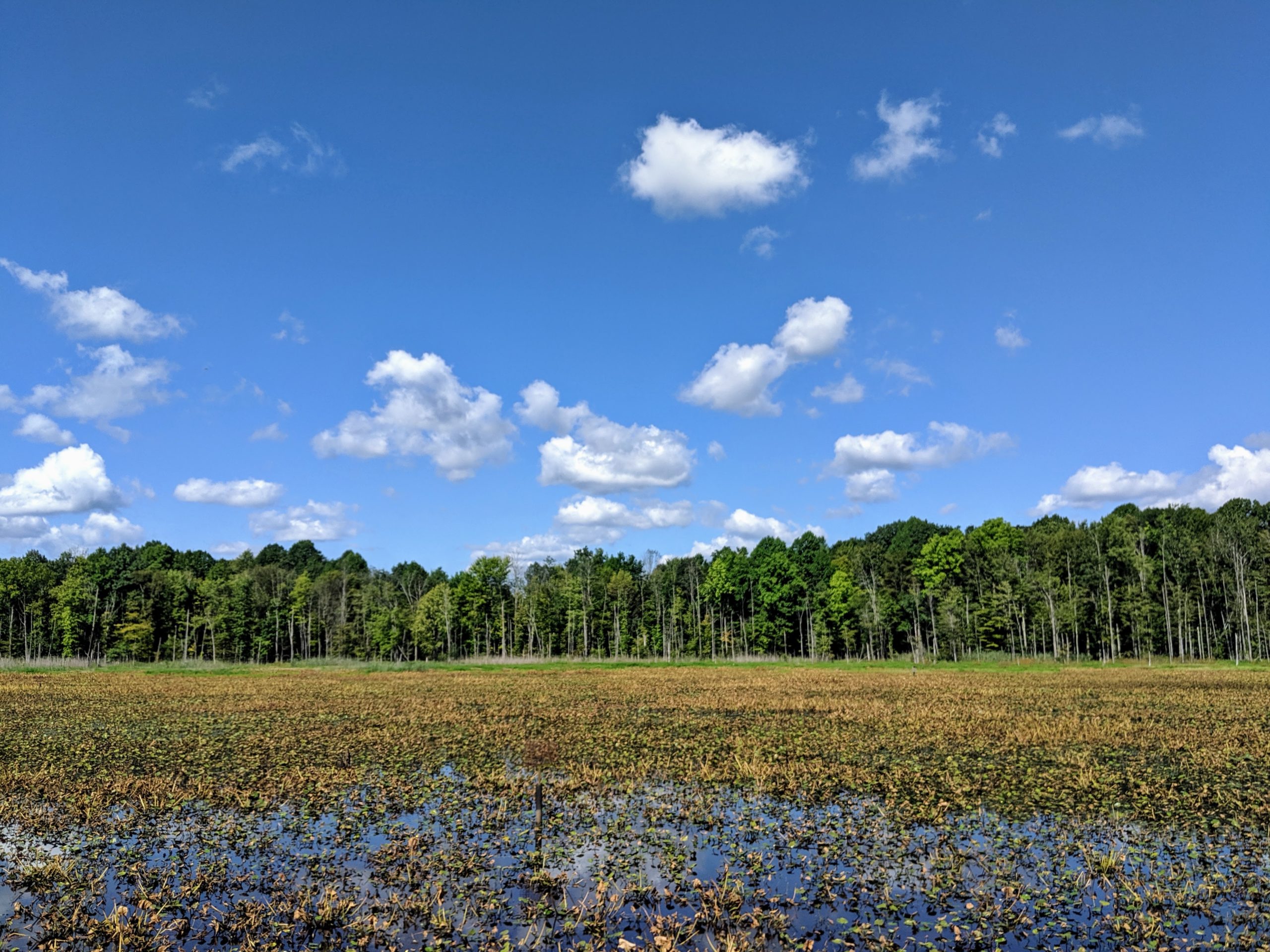State and federal laws (sections 401 and 404 of the Clean Water Act, as well as Ohio Revised Code 6111) require impacts to aquatic resources, including wetlands and streams, to be offset with compensatory mitigation. One way to provide the required mitigation is for applicants to purchase mitigation credits from mitigation banks or in-lieu fee (ILF) program sponsors. The Stream + Wetlands Foundation (S+W) was established in 1992 and is the sponsor of multiple mitigation banks and ILF programs.
What are UMBIs?
Mitigation banks are typically single site projects. However, in some instances, sponsors may choose to establish an Umbrella Mitigation Bank Instrument (UMBI). The instrument that establishes an UMBI sets out the parameters for the establishment of bank sites that will be operated under the UMBI. Multiple bank sites can then be added to the UMBI over time. UMBIs can help streamline the review and approval process for new sites and be used for tracking no-net loss of wetland acreage within the watershed.
What Does This Mean for Permittees?
Rather than purchasing credits from a specific mitigation bank, permittees will buy from the approved UMBI. For example, in northeast Ohio, a permit applicant could buy credits from the Black-Rocky UMBI, which currently has one approved site, the Grafton Swamp Wetlands Mitigation Bank. Click to see our other approved UMBIs and associated bank sites.
In-Lieu Fee (ILF) Advance, Fulfilled, and Released Credits: ILF mitigation credits work essentially the same way as credits purchased from a mitigation bank, as far as a permit applicant is concerned, although banks do have preference in the mitigation hierarchy. There are three types of credits described in the federal mitigation rule: advance credits, fulfilled credits, and released credits.
“Advance” ILF Credits: Advance credits (i.e., typical ILF credits) can be used by permit applicants to fulfill their compensatory mitigation needs when bank credits are not available. The ILF program sponsor then has three years to start implementation of a mitigation project to fulfill the amount of advance credits that were sold to an applicant.
“Fulfilled” ILF Credits: When a sponsor completes an ILF mitigation project, the credits generated by the project can be used to “fulfill” the previously sold advance credits. This satisfies the three-year timeline specified in the federal rule.
“Released” ILF Credits: If a sponsor generates credits at a project beyond what is needed to fulfill their advance ILF obligations in that service area, and if they receive regulatory approval, those surplus credits are considered “released” credits. A “released” ILF credit is equivalent to a mitigation bank credit because like a bank, the mitigation was provided in advance of authorized impacts, and therefore there is no temporal loss of aquatic resources.
Each type of mitigation option has unique features and requirements, and the choice of which one to use depends on various factors, including type of wetland impacted, the type and scope of the project, and whether or not is a state and/or federally regulated aquatic resource. Whether using mitigation bank or ILF credits, once a permit applicant completes payment to the sponsor, the applicant has fulfilled the requirements of their permit.
S+W is one of the only mitigation providers in the country that sells both mitigation bank and ILF credits! Reach out through our website or by contacting Kellie Griffin at kgriffin@streamandwetlands.org.

